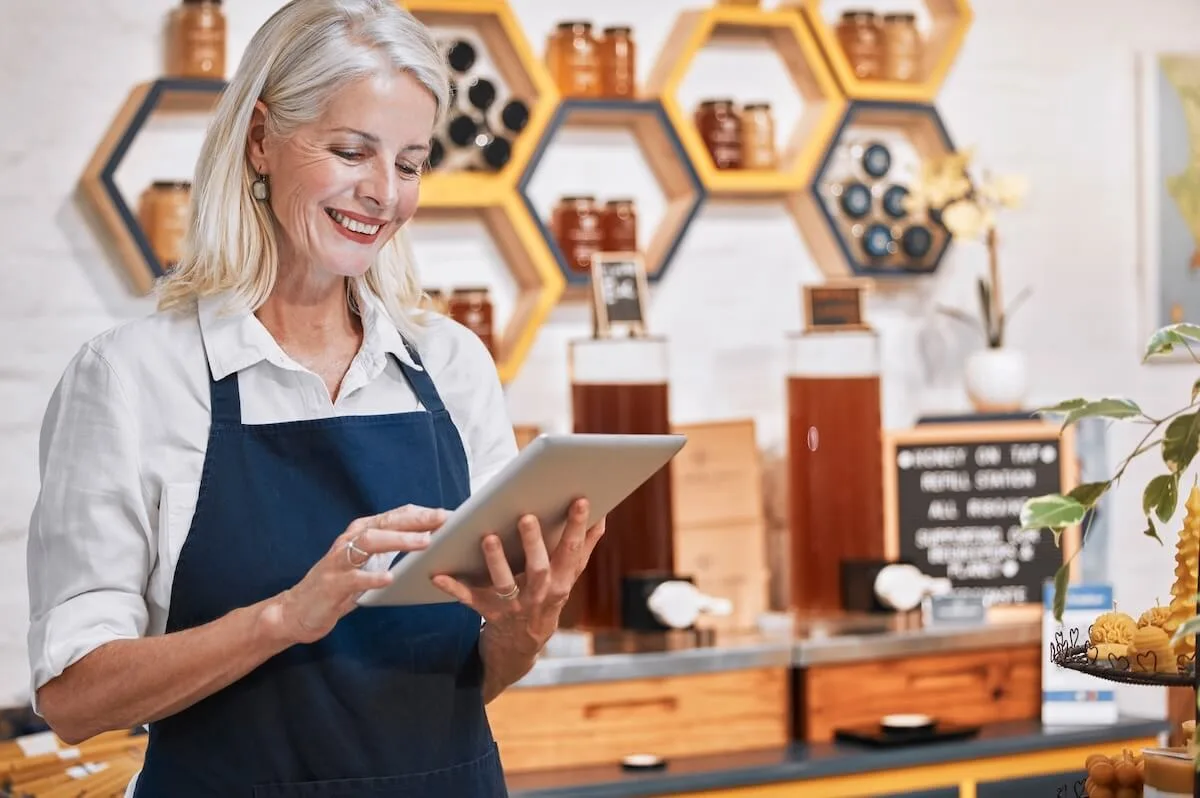8 types of restaurant marketing software that’ll make life easier
With the ever-expanding number of roles restaurant owners have to play in today’s restaurant industry, it may seem like growing an extra set of arms or cloning yourself may be the only way to get everything done. Luckily, when it comes to marketing, there’s a proliferation of restaurant marketing tools designed to make restaurateurs’ lives easier and improve the outcomes of marketing efforts.
Having a broad range of restaurant marketing software at your disposal allows you to tap into different target audiences and reach as many customers—new and returning alike—as possible. Getting your name and news out there via multiple channels is a surefire way to get more eyes on your establishment.
So, let’s take a look at some good places to start as well as specific examples of tools that’ll make your marketing tasks quicker and easier.
1. SEO marketing tools

Your restaurant’s website is one of the best tools you have to attract new customers. Of course, it should have basics like your phone number, address, hours, and menu. Just how fancy you make it is up to you and your budget, but one thing is certain: You want to make sure customers can find you via search engines. The way to climb up the search result ladder is called search engine optimization (SEO).
To start a basic SEO strategy, you’ll need to identify a few things:
- What keywords customers likely use when they’re searching for your restaurant or one like yours
- How difficult it is to rank for those keywords in your area
- How your website currently performs and what you can do to improve your search result rankings
Just how deep you want to go down this rabbit hole depends largely on where you are, how much business you need to attract, and how difficult the search terms you’re trying to rank for are. For example, “Chicago steakhouse” is a much more difficult search term than “Fargo steakhouse,” and websites thus need to put more into their SEO game to reach the top of search results.
Good tools for keyword research include free tools like Screaming Frog and Yoast. There are a wide range of mid-tier, user-friendly paid keyword research tools like Keysearch, and then there are heavy-duty, costly, but valuable tools like Ahrefs and Semrush for restaurants really trying to get higher up in search results.
2. Email marketing tools

An email list may sound outdated to some in this era of proliferating digital marketing, but don’t be fooled: Email marketing is still a sound marketing strategy. Email marketing provides a $36 return on each $1 spent. These ongoing marketing campaigns help you retain your current customers and keep them up to date on what’s happening at your establishment, raising the chances of repeat visits.
Email marketing platforms like Mailchimp, Constant Contact, and Hubspot offer a range of features to streamline your email campaigns, including pre-built email templates, list management, automation, and detailed metrics. For reference, Hubspot offers a number of free customer relationship management (CRM) functions that can help your team hit their targets.
One major feature of these platforms is allowing for guest segmentation, so custom emails can be sent to specific customers or groups or customers. For example, keeping your customer data updated with birthdays can allow you to send personalized emails to customers.
We encourage restaurants to let their personality shine in their emails: Well-written emails with a touch of humor, humility, and honesty go a long way in establishing a personal connection.
3. SMS marketing software
SMS marketing has some of the highest open rates of any marketing campaign: up to 98%. That’s extraordinarily high, and tops any other channel. So, if you have a list of customer phone numbers, consider an SMS marketing campaign. A good way to use SMS marketing is to send out news related to special events, promotions, and menu item specials, as well as freebies like digital coupons.
Tools like EZ Texting, Brevo, and Sender help restaurants send updates, promotions, and reminders directly to customers’ mobile devices.
4. Online review platforms

Managing your online reputation is critical in our modern age, and your online presence in reviews will be a part of the digital ecosystem whether you like it or not. Ensuring you respond to online reviews on platforms like Yelp and social media, both positive and negative, will go a long way in tending to your customer relationships.
It’s wise to keep a close eye on customer reviews, since they can take you out of a data-driven approach to guest behavior and give you a glimpse into real-life anecdotes you can relate to. Responding to as many reviews as possible will help you come across as personable and relatable, and can turn even negative experiences into net positives. Consider these reviews another marketing channel, since customers absolutely check review platforms.
5. Social media marketing software
Social media marketing is its own world, and restaurants who want to keep up with the ever-increasing pace of it need to dedicate a good chunk of time to it. However, it’s invaluable and unavoidable. Just for an example, some 30% of millennials are wary of restaurants without much of a presence on Instagram.
Once you’ve established a presence on important social media platforms like Instagram, Facebook, and TikTok, you’ll need to figure out a way to schedule posts across them. Hootsuite, Sprout Social, and Buzzsumo all help you streamline your social media presence via marketing automation. They schedule posts, monitor mentions, and analyze your marketing campaign performance.
A valuable newcomer to the world of restaurant social media marketing are Yelp’s booking links. Any Guest Manager customer is now able to generate unique URLs for social media platforms that take customers directly to the restaurant’s reservation page. These links make it easier than ever for customers to make a reservation, since any friction between them and you is eliminated.
6. Loyalty programs

Loyalty programs can be a great way to keep customers coming back to your restaurant, steadily building your customer base. While there are many ways to run a loyalty program, a custom loyalty mobile app can go a long way towards building a modern and fun rewards system. There are a variety of companies that provide custom loyalty app services for a monthly fee which isn’t nearly as high as hiring a developer to build one from scratch.
As far as restaurant marketing strategies go, a customer loyalty program can punch above its weight to make customers feel appreciated and provide a great return on investment. For example, a customer that knows they’ll get a free dessert, comped meal, or other rewards on their birthday is likely to bring their friends along as well—who will hopefully get in on the action, bringing you more business.
7. Graphic design software
Having solid graphics is a must. Once your restaurant branding is in place—in other words, your color scheme, font, and logo—you’ll want to incorporate your graphics in all of your social media posts and emails. For the less visually talented, tools like Canva provide excellent templates. You don’t need an art degree to make your posts look good. There are plenty of amazing (and free!) restaurant templates for social posts, newsletters, ads, signs, and even menu design.
8. Yelp’s restaurant marketing platform
Yelp provides a one-two punch for marketing: Combining Yelp Ads with Yelp Guest Manager, Yelp’s front-of-house software suite, can lead to significant outcomes.
Just how significant, you ask?
Restaurants that use Guest Manager paired with Yelp Ads experience 87% more traffic on their Yelp business page. Restaurants that use Yelp Guest Manager and Yelp Ads experience up to a 17% monthly lift in diner bookings through Yelp.
So, if you’ve already got a Yelp page (and we hope you do), pairing it with Guest Manager can get you more eyes on your business.
Want to see what Guest Manager is all about? Curious to take it for a test drive? Reach out to us for a free demo. We know what a difference good marketing can make.